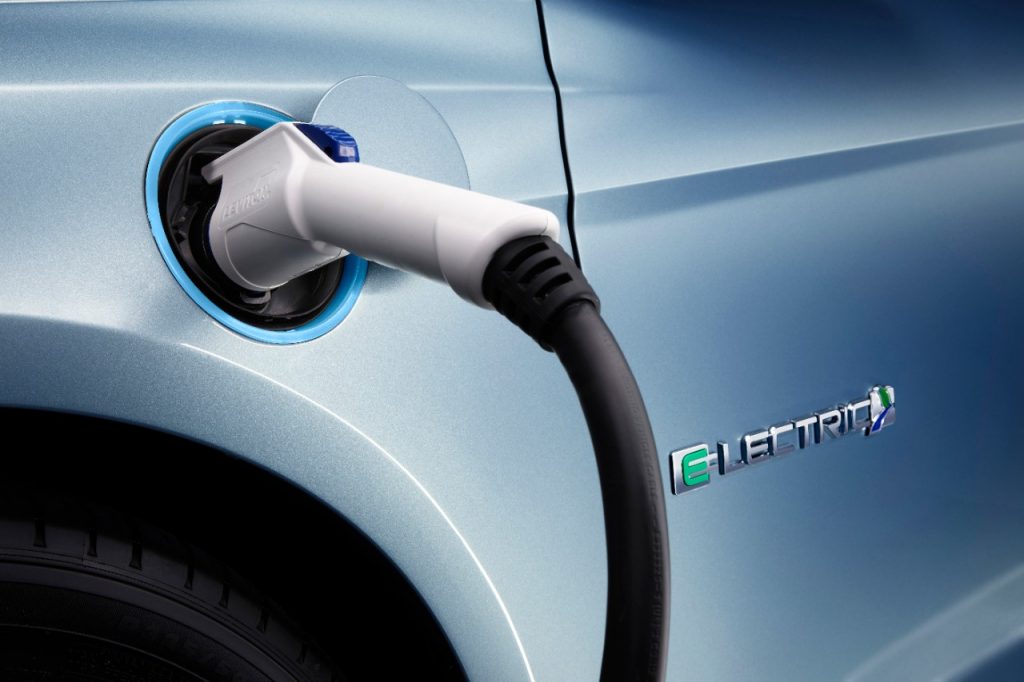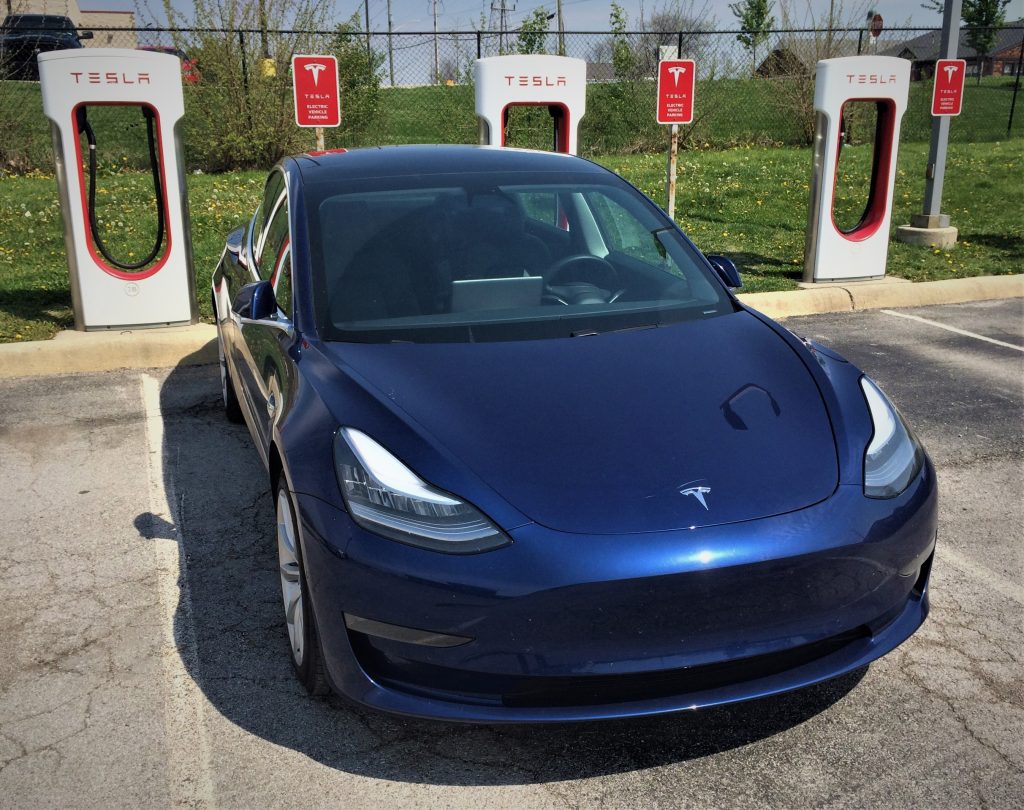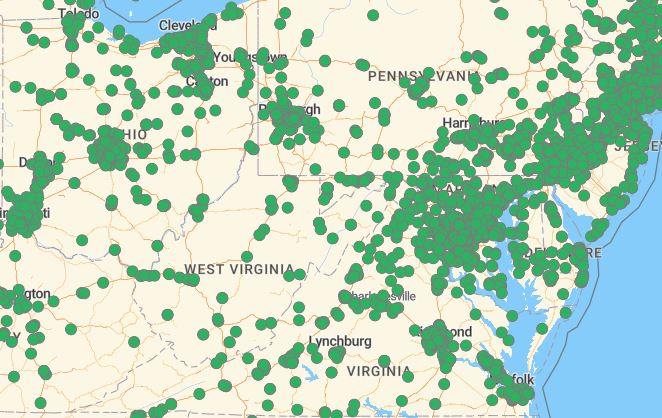
One of the core benefits touted by EV manufacturers and EV owners is a lower operating cost, buttressed specifically by removing those regular $25 to $50 gas station fill-ups from the equation.
Before we dive in, you may want to read this article to familiarize yourself on the distinction between Level 1, Level 2 & Level 3 charging: How Long Does it Take to Charge an Electric Vehicle?
So, does that mean charging an EV is free?
Not really, but like so many things we’ve talked about relating to electric vehicles, the answer is a bit nebulous.
Understanding EV Charging Stations & The Potential Costs
Specifically, if you’re on the road and decide to use a remote charging station supplied by a third party, you’ll probably have to pay for it.
We say “probably” here, because some charging stations certainly are no-strings-attached and really free…but there may still be a catch.
For instance, places can advertise “free EV charging,” yet all they may have is a few ordinary exterior household 120-volt AC sockets to enable Level 1 charging. So yeah, sure, it’s free to plug in and charge there—just expect to spend several hours in the parking lot while your EV juices up. (In other words, you may want to make sure what type of charging is available before you commit.)
But that’s not to say that free Level 2 charging stations don’t exist either. They certainly do, and they’re often located as a “draw” (amp pun intended) to bring folks to a shopping center, restaurant, or amusement park.

As alluded to above, some EV charging stations require a per-charge fee. A good example is California, where it makes Level 2 and Level 3 DC Fast Charging stations available to the public for a per-use fee (more on that in a sec).
Still other charging stations are available with a subscription plan—one that’s often backed by an EV manufacturer.
As an example, to incentivize a new vehicle purchase, Tesla may offer free charging at its Tesla Superchargers for a period of time. Once the free period has lapsed, Tesla owners can pay for using a Tesla Supercharger via their Tesla owner’s account.
Charging Your EV at Home
Charging stations aside, you’ve still got the ability to charge your EV at home. And for many homes with a garage or adjacent parking, the process can be as simple as plugging your EV into an ordinary household AC outlet for Level 1 charging. In this scenario, you’d simply pay more on your regular utility bill as a result of the extra electrical power EV charging requires.
While this method has no immediate up-front installation costs, if you read our earlier story about charging levels, you may find that Level 1 charging isn’t the most ideal setup.
Conversely, Level 2 charging is very attractive to homeowners who use their EVs often. In this case, there would be some additional costs involved in hiring a professional electrician to install the 220-volt charging system in your garage. Then, like Level 1 charging above, your future EV charging costs are incorporated into your regular monthly electric bill.
So, let’s talk about how charging your EV at home can impact your utility bill…
What Does it Cost to Charge an EV?
Well again, it depends. As you’d imagine, electric rates can differ based on whether you’re charging at home or a charging station. And some charging stations offer a premium price when you step up from, say, Level 2 to Level 3 DC fast charging.
But the fine folks at the United States Department of Energy have an estimate that may give you a better idea of the cost of charging an EV. Per the DOE’s website:
“If electricity costs $0.13 per kilowatt-hour, charging an EV with a 200-mile range (assuming a fully depleted 66 kWh battery) will cost about $9 to reach a full charge.”
And while it uses different vehicle and electricity cost benchmarks, that’s in the ballpark of what the California Air Resource Board (CARB) says too:
“The average price in California is about 18 cents per kilowatt hour (kWh). At this price, charging an electric car such as the Nissan LEAF with a 40-kWh battery with a 150-mile range would cost about $7 to fully charge.”
And when it comes to using one of California’s publicly available EV charging stations alluded to above, CARB gives some estimates there as well:
“Drivers in California may expect to pay 30 cents per kWh to charge on Level 2, and 40 cents per kWh for DC fast charging. At these rates, the same Nissan LEAF … would cost about $12.00 to fully charge using Level 2, and $16.00 with DC fast charging.”
If you really want to get into the weeds on vehicle operating cost comparisons, check out this helpful Vehicle Cost Calculator from the U.S Department of Energy.
How to Find an Electric Vehicle Charging Station
Again, let’s turn to our pals at the Department of Energy and the Alternative Fuels Data Center. They’ve put together an interactive map that’ll help you find nearby EV charging stations. And this map can be used to plan a route if you’re taking an EV on a road trip.

Not only can you search by what’s available, you can filter by the charging level (Level 2 or Level 3 DC Fast Charging) you want and by the type of plug your particular EV requires.
Click Here to See the DOE’s Charging Station Map.
***
So hopefully this explained some of the not-so-hidden costs involved in charging an electric vehicle. And while it may be cheaper than a traditional internal combustion engine fill-up in some instances, there are other factors to consider beyond cost (namely charging time).
But as electric vehicles proliferate, and more auto manufacturers and local governments commit to enhancing charging infrastructure and battery tech, we’ll likely see improvements in both EV charging time and charging costs.

Comments